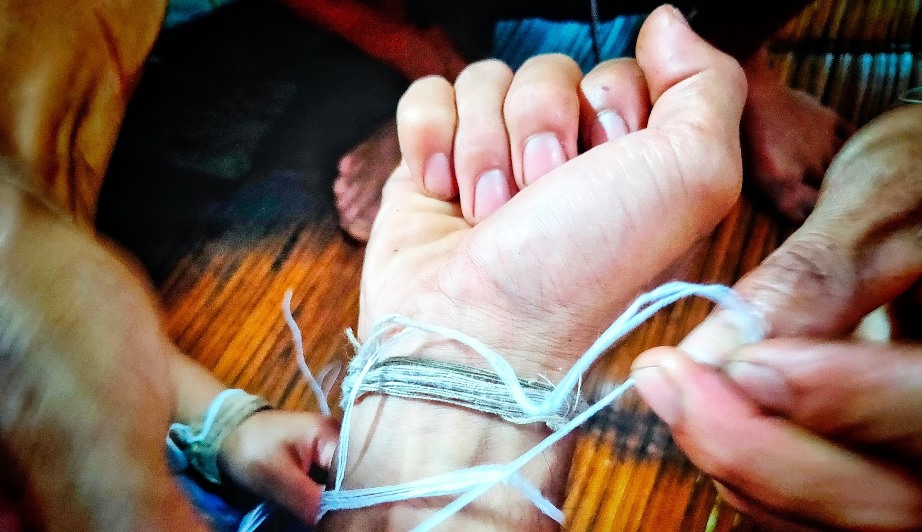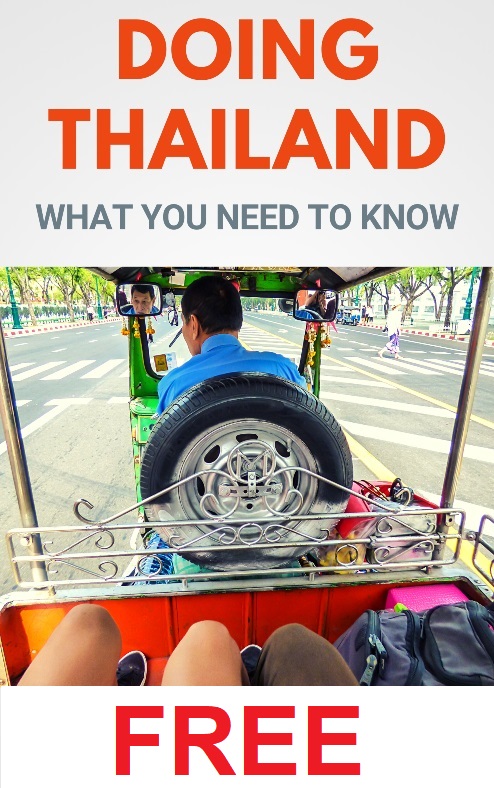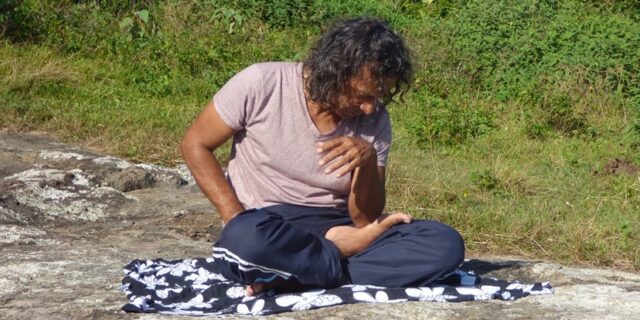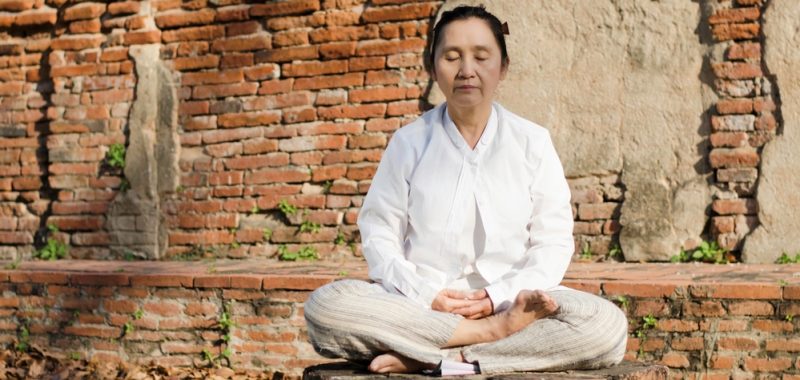
The Thai word Khwan denotes the “vital essence” of a human being, large old trees (especially Bodhi trees), and certain plants (such as the rice plant) or animals (such as buffaloes and elephants). The concept of Khwan could be compared what in the West is called the “soul” or “spirit.”

In humans, Khwan is believed to control and hold body and mind together. If the body is sick, Khwan will also be affected, and if Khwan is sick the body and mind will become ill. A difference with the Western idea of the soul is that Khwan is thought to be impermanent: if the body dies, the Khwan also dies.

In Thailand you would see some trees, often on temple grounds, that are wrapped in sacred colorful cloths to “bind” or “keep” the Khwan inside. Sometimes these Khwan even have a so-called Thai Spirit House devoted to it. It’s thought that if the Khwan leaves it will bring evil and disaster to the temple or to any other place where the tree is residing.
As for human beings, there’s a strong belief in Thailand that the Khwan can get out of the body and wander around, for instance, in dreams. The Khwan can also leave more permanently, which can occur when the body is ill or because of a frightening or traumatic experience.
The person then becomes mentally ill, suffering from depression or other mental illnesses. In this case, the Khwan needs to be called back or retrieved through a ceremony called Tham Khwan (literally meaning “making of the Khwan”), which could be described as soul retrieving.
The Tham Khwan ceremony consists of several steps: Riak Khwan (เรียกขวัญ), which could be translated as “soul retrieving,” “calling the spirit,” or “calling the Khwan,” followed by Tak Khwan, which is the “picking up of the Khwan” or “taking the Khwan,” to end with Phook Khwan, which means “tying the Khwan,” or “binding the Khwan,” hence “binding the spirit to the body.”
If the ceremony is successful the Khwan comes back in the body and the affected person heals, typically mentally and in its trail also physically. If the Khwan doesn’t come back the person will eventually die or stay ill. The ceremony is important in Thailand and is one of the treatments used in Thai Spirit Medicine to heal someone who’s mentally ill or unstable. Nonetheless, the ceremony may also be performed on people who are physically ill when it’s thought that the illness has been caused by an absence of the person’s Khwan.

Apart from calling the Khwan back to the body, the Thai also perform periodic ceremonies to secure or bind the Khwan to the body, just as a precaution, and notably when a sudden change in status, rites of passage, or a change in place of residence of the person is imminent.
The Tham Khwan ceremony is accompanied by chanting and prayers, offerings, symbolic gestures (like picking up the Khwan in a bowl or ladle), and binding a sacred string around the wrists of the affected person to symbolize “binding of the soul to the body.” Usually, a string around the left wrist is to bind or secure the Khwan and a string around the right wrist is rather to call the Khwan back to the body, but practices may vary.
Do mind that the Tham Khwan ceremony knows quite some variations in Thailand (both in names used for distinct ceremonial steps or for the type of actions to be taken) depending on the region or local community, and depending on the occasion, which could be manifold, such as a specific rite of passage, compensation of an injury done to a person, going away traveling or studying, “taming” a difficult child, or for people who are frequently ill, and so on.


















